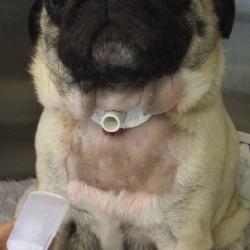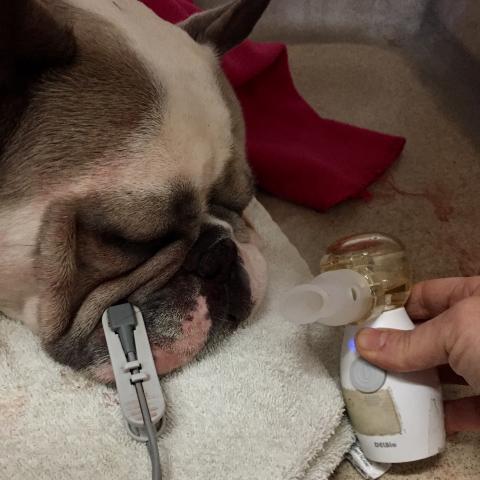Management & Treatment of BOAS
Management
Surgical intervention
- Pharynx (soft palate, tonsils)
- Larynx (laryngeal saccules and cartilages)
- Nostrils (external nostril wings and alar folds)
- Nasal cavity (nasal turbinates)
All images are copyright of the University of Cambridge or individual contributors, all rights reserved, no reproduction without permission.
Management
Fitness
Comparing body weight to the breed average weight is not a reliable way to assess a dog’s ideal weight. Body condition score (BCS) is a more useful scoring system to assess whether an animal is underweight or overweight.
Our research findings show that obesity (i.e. BCS≥7) is significantly associated with BOAS. Fat tissue within the airway tract can further narrow the lumen. For obese dogs with mild to moderate BOAS signs, weight loss is suggested prior to surgical intervention.
(photos to be uploaded)
Avoid overheating
While it is important that you exercise your dog regularly and keep him/her fit, it is also important to remember that brachycephalic breeds, particularly BOAS-affected dogs, may have difficulty regulating their body temperature. Therefore, it is recommended that you avoid exercising your dog excessively or during hot summer days. In general, it is best to keep your dog away from hot environments or situations that may cause too much excitement or stress in him/her. Signs of overheating include: heavy panting, elevated body temperature, glazed eyes, increased pulse, vomiting/diarrhoea, excessive thirst, dark red tongue, excessive drooling, staggering. In severe cases, they may seizure, collapse, become unconsciousness, or even die. If you notice signs of overheating in your dog, you should move him/her to a cool place with good air conditioning. You should keep providing him/her with a small amount of water to drink to avoid dehydration, and cool him/her down by soaking with cool water. Contact your vet for further treatment and evaluation.
(photo to be uploaded)
Surgical interventions
Surgical procedures
The main BOAS lesions at the pharynx are the oversized soft palate and the everted/hypertrophic tonsils. Several surgical techniques have been reported to shorten and thin the soft palate. The elongated soft palate should be trimmed to the tip of the epiglottis. If the soft palate is thickened, a folded flap palatoplasty (to shorten and thin the soft palate) may be used.
Everted/hypertrophic tonsils are commonly seen in BOAS-affected dogs, where the tonsils are enlarged and extrude from the crypt and further narrow the pharynx. Partial removal of the extruding tonsils increases the pharyngeal space.
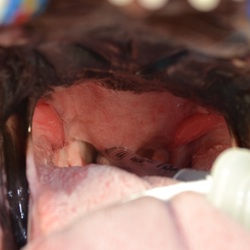
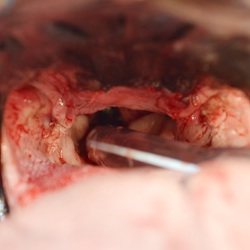
Some BOAS affected dogs present with different degrees of laryngeal collapse as secondary changes if the primary airway lesions left untreated. Everted laryngeal saccules could occupy up to 2/3 of the windpipe opening. Removal of everted laryngeal saccules is a simple and effective procedure to open the ventral part of the larynx. With fine laryngeal surgical instruments, the complication rate is very low.
Laryngoplasty (e.g. trimming of the deformed/collapsed cuneiform processes) may be performed in dogs with Grade II and III of laryngeal collapse, or in dogs with laryngomalacia (very soft laryngeal cartilages). Further laryngeal lateralization (laryngeal “tie-back”) or permanent tracheostomy may be required for dogs with irreversible Grade III laryngeal collapse.
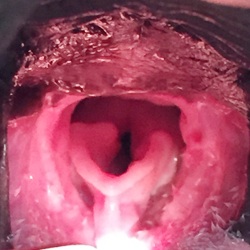
Wedge resection of the nostrils and Trader’s technique for amputating the nostril wings are both effective surgical techniques to widen the external nostrils. However, many BOAS-affected dogs have second stenosis at the level behind the nostril wings, call nasal vestibule. Alar fold resection can effectively address the problem.
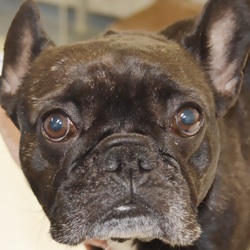
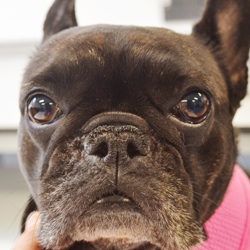
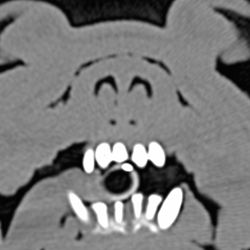
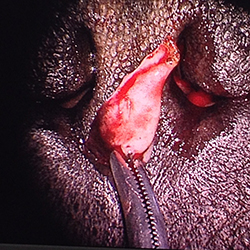
Laser-assisted turbinectomy (LATE) has been used to address the intranasal obstruction, particularly in pugs and French bulldogs. The aberrant and hypertrophic nasal conchae are removed. LATE surgery is indicated for dogs that tend to mouth breathe when at rest, dogs that present with excessive panting during exercise with heat intolerance, sleep disordered breathing (e.g. apnoea), and dogs that had little or no improvement after conventional surgery (e.g. soft palate shortening/thinning and widening of the nostrils). Rhinitis and reverse sneezing may be present after the surgery, but the symptoms usually resolve spontaneously. We routinely perform CT and rhinoscopy to document any nasal obstructions. Together with the result of whole-body barometric plethysmography after the conventional BOAS surgery, we then see if the dog is likely to benefit from laser-assisted turbinectomy.
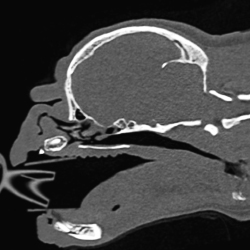
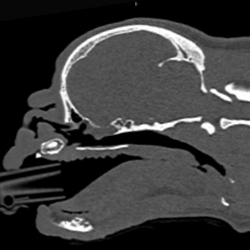
Risks and prognosis
Post-operative recovery from anaesthetic is the major risk related to the surgery. Inflammation and swelling of the airway may occur post-operatively. A temporary tracheostomy tube can be placed if necessary. Aspiration pneumonia caused by regurgitation is also a risk after surgery. Gastro-protectants are given to all surgical patients.
The surgical results are variable and depend on the severity of the disease. Dogs with Grade II or III laryngeal collapse usually have a poorer prognosis. BOAS is not curable. Nevertheless, upper airway corrective surgery can provide a better quality of life. Regular post-operative rechecks are suggested. Revision surgery might be required in some severely affected dogs.
